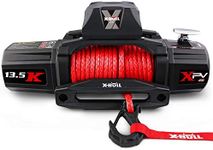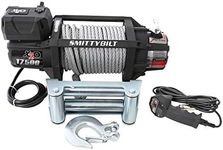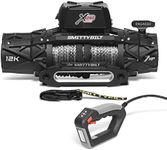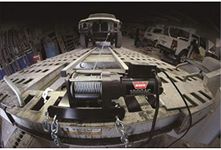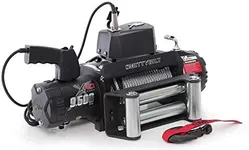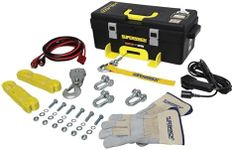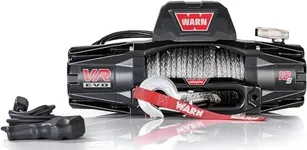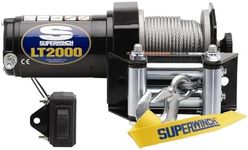Buying Guide for the Best Truck Winches
Choosing the right truck winch is all about matching the winch’s capabilities to your truck’s size and the type of tasks you expect to tackle. Whether you’re planning off-road adventures, need recovery options for work, or want peace of mind for emergencies, understanding the key features of winches will help you make a smart choice. Focus on the specs that matter most for your needs, and always consider how and where you’ll use your winch.Pulling Capacity (Rated Line Pull)Pulling capacity, often called rated line pull, is the maximum weight a winch can safely pull. This is crucial because using a winch with too low a capacity for your truck or the loads you plan to move can be dangerous and ineffective. Pulling capacities are usually listed in pounds, and they range from lighter-duty (around 8,000 lbs) to heavy-duty (over 12,000 lbs). For most trucks, a good rule of thumb is to choose a winch with a capacity of at least 1.5 times the gross weight of your vehicle. If you plan to recover other vehicles or haul heavy loads, opt for a higher capacity. For lighter trucks and occasional use, a lower capacity may suffice.
Winch Type (Electric vs. Hydraulic)Winches come in two main types: electric and hydraulic. Electric winches are powered by your truck’s battery and are the most common for recreational and general use because they’re easy to install and operate. Hydraulic winches use your vehicle’s power steering pump and are better for continuous, heavy-duty use since they don’t overheat as easily. If you need a winch for occasional self-recovery or light work, electric is usually the best fit. If you expect to use your winch frequently or for long pulls, consider hydraulic, but keep in mind it requires a compatible hydraulic system.
Rope Type (Steel Cable vs. Synthetic Rope)The rope on a winch can be either steel cable or synthetic rope. Steel cable is durable, abrasion-resistant, and good for rugged environments, but it’s heavier and can develop sharp burrs. Synthetic rope is lighter, easier to handle, and safer if it breaks, but it can be more vulnerable to abrasion and UV damage. If you want maximum strength and don’t mind extra weight, steel is a solid choice. If you value ease of use and safety, especially for off-roading, synthetic rope is often preferred. Think about where and how you’ll use your winch to decide which rope type fits your needs.
Line SpeedLine speed refers to how quickly the winch can pull in the rope under load. Faster line speeds mean quicker recoveries, but sometimes at the cost of pulling power. Line speed can vary widely, with some winches pulling in rope much faster than others. If you need to recover vehicles quickly or want to minimize time spent winching, look for higher line speeds. For heavy-duty or precise work, a slower, more controlled line speed may be better.
Control Options (Remote, Wired, Wireless)Winches can be operated using different types of controls, such as wired remotes, wireless remotes, or manual switches. Wired remotes are reliable and don’t require batteries, but limit your movement. Wireless remotes offer more flexibility and safety by letting you stand farther away, but they depend on batteries and can sometimes lose connection. If you value convenience and safety, a wireless remote is a great feature. For simplicity and reliability, a wired remote may be all you need.
Mounting OptionsMounting options refer to how and where the winch attaches to your truck. Some winches are designed for permanent mounting on a bumper or winch plate, while others can be mounted on a receiver hitch for portability. Permanent mounts are best for frequent use and heavy-duty tasks, while portable mounts are good if you want to use the winch on multiple vehicles or only need it occasionally. Consider your truck’s setup and how often you’ll use the winch to choose the right mounting style.

